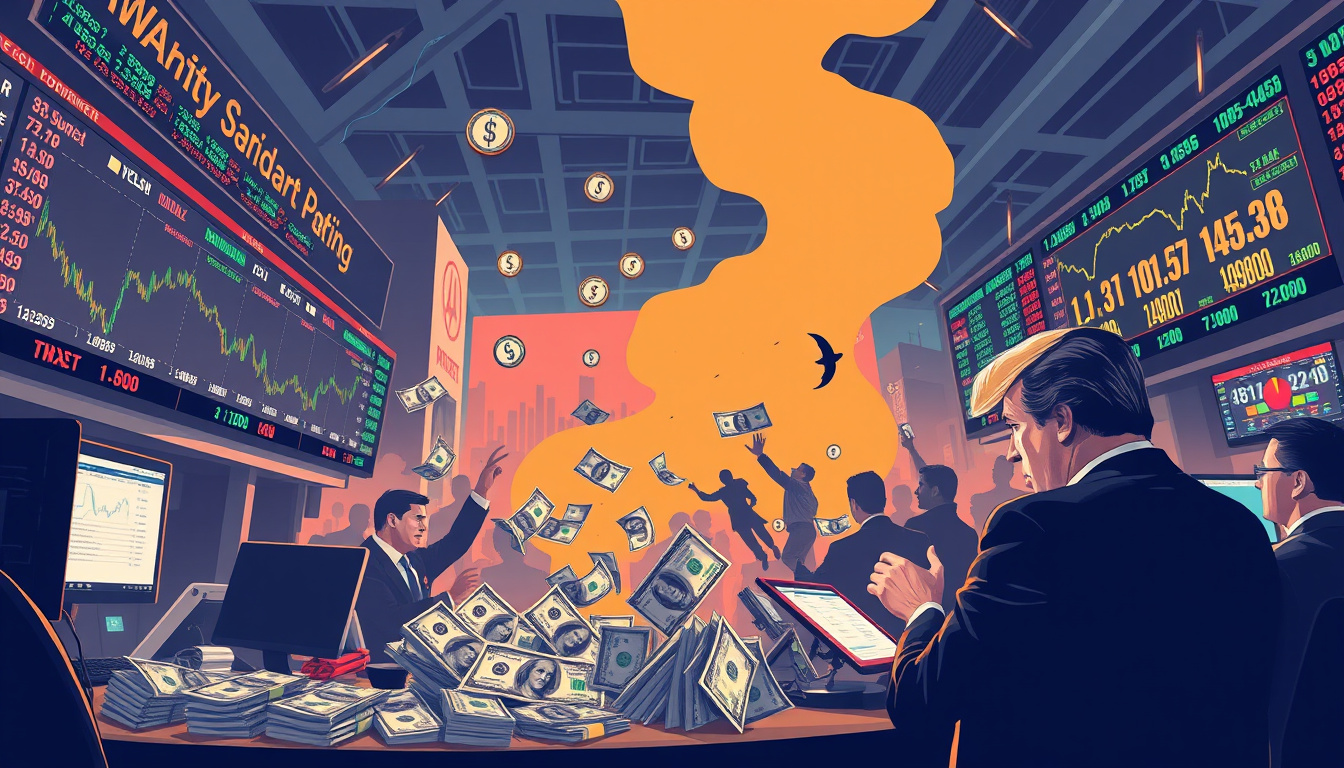The constantly fluctuating economic landscape of the United States is once again under intense scrutiny, particularly following the recent policy shifts emanating from the Oval Office. This volatility, primarily attributed to President Trump’s strategies, has raised questions: Is Trump’s influence contributing to a decline in the dollar’s strength?
The Prelude to Economic Turmoil
April 2 marked a significant turning point as Trump announced a sweeping series of tariffs impacting nearly every nation with which the U.S. has trade relations. While designed to target countries with whom the U.S. trades at a deficit, these tariffs inadvertently ensnared nations like Australia, and even uninhabited islands. The new tariff regime raised the average tax on U.S. imports from a mere 2.5% to a staggering 27%.
Markets reacted swiftly and negatively. The U.S. stock market experienced record trading volumes, leading to a staggering multi-trillion dollar loss. The S&P 500 witnessed its largest decline in 48 hours, signaling an acute bear market phase. Although Bitcoin initially showed resilience, it ultimately succumbed to the broader market downturn, following many cryptocurrencies in a steep decline.
Speculating on Economic Strategy
Claims began to emerge suggesting that the Trump administration might be leveraging economic instability to serve specific interests, notably, that of debt refinancing. As the U.S. grapples with significant debt obligations, low bond yields would facilitate cheaper refinancing. Analysis suggested that an engineered recession would divert investments away from risky assets like stocks and cryptocurrencies towards government bonds, subsequently lowering yields due to inverse market dynamics.
In the wake of Trump’s tariffs, bond yields indeed experienced a drop; for example, the yield on the 10-year Treasury fell from 4.22% to 3.86%. Treasury Secretary Scott Bessant, during an interview, described himself as a “bond salesman,” celebrating the decrease in bond yields that promised substantial savings for the government, potentially upwards of $1 trillion.
The Escalation of Trade War
However, this reprieve was short-lived. By April 7, Bessant contradicted earlier statements, declaring the max tariff levels had been reached just as Trump threatened to escalate tariffs on China to 104% in retaliation to their response to the newly established tariffs. China, in return, maintained a resolve to counter any further escalation, promoting dialogue instead but prepared for continued resistance.
The increasing tension led to stark consequences in the American bond market, sparking a sell-off of U.S. dollar assets that coincided with rising yields, contradicting the earlier hopes for a stable refinancing environment. All this happened amid a broader global trade war context that could further destabilize the financial system.
Shifts in Market Confidence
The narrative of an impending debt crisis was underscored by the swift sell-off in the bond market, raising concerns about investor confidence in U.S. Treasury securities — crucial to the global financial structure. Economic analysts suggest that if bond investors began to withdraw their support for U.S. debt, dire consequences could follow.
Amid this tumult, Trump sent mixed signals to the market, prompting a tweet on Truth Social advocating it as an opportune time to purchase stocks in his company, DJT. This announcement coincided with a surprise declaration of a 90-day partial reprieve on tariffs for most countries — excluding China, Canada, and Mexico — igniting a significant rally in the market.
Conclusion: The Dollar’s Diminishing Stature?
As the dust settles, it becomes imperative to assess the underlying effects of Trump’s economic maneuvers on the strength of the dollar. While short-term rallying witnessed after the tariff adjustments may project a façade of stability, the long-term impacts reflect a deeper concern regarding investor confidence, borrowing costs, and the U.S. monetary system’s resilience.
Trump’s policies are a double-edged sword, capable of both galvanizing markets temporarily while simultaneously sowing uncertainty and instability in the broader economic landscape. The ongoing watch regarding the U.S. government’s financial health and the dollar’s standing remains critical, as stakeholders from around the world continue to evaluate the implications of America's recent tumultuous economic path.
By Wolfy Wealth - Empowering crypto investors since 2016
[highlight=transparent]⚡️Exclusive research[/highlight]
[highlight=transparent] 📈 Early signals[/highlight]
[highlight=transparent] 📬 Weekly reports[/highlight]
[highlight=transparent] Just what you need to win in crypto. [/highlight][highlight=transparent]Click [/highlight]Here
Disclosure: Authors may be crypto investors mentioned in this newsletter. Wolfy Wealth Crypto newsletter, does not represent an offer to trade securities or other financial instruments. Our analyses, information and investment strategies are for informational purposes only, in order to spread knowledge about the crypto market. Any investments in variable income may cause partial or total loss of the capital used. Therefore, the recipient of this newsletter should always develop their own analyses and investment strategies. In addition, any investment decisions should be based on the investor's risk profile.

